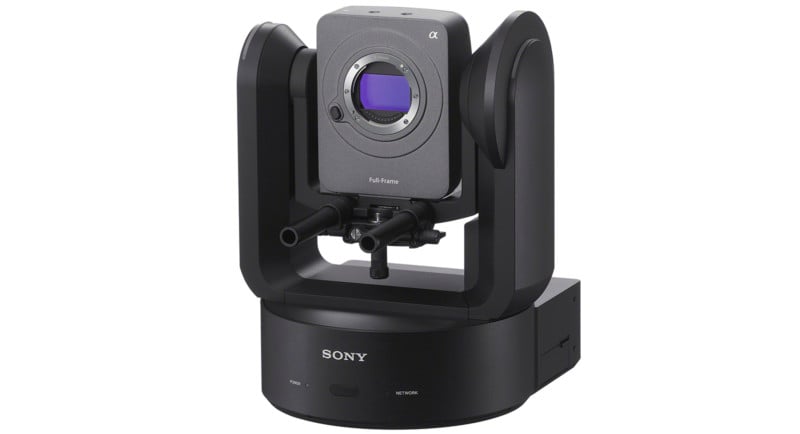Lensrentals Shows Why Sony’s PTZ FR7 Camera Costs $6,000 to Fix
![]()
Lensrentals’ founder Roger Cicala is back after a lengthy hiatus to deliver another of his legendary camera teardowns. This time, the camera going under the proverbial knife is the Sony PTZ FR7, a $10,500 cinema-grade E-mount PTZ camera and a very popular rental choice.
Cicala returned to the fold for what he describes as a Lensrentals “birthday teardown.” The company celebrated its 19th anniversary last month, and marked the occasion with a look back at the most popular camera and lens rentals of the last 19 years. However, Cicala and the Lensrentals family figured the anniversary would be an excellent chance for Cicala to blog another teardown, like he did for so many years.

“Most of our teardowns are done for a purpose, and this is no exception. Sony PTZ cameras are extremely popular rentals right now; they offer some amazing capabilities at a price that makes people think, ‘Maybe we should just rent that when we need it,'” Cicala writes. “However, it has been a bit of a problem for us in terms of repair, as it breaks fairly often.”
The Sony PTZ FR7, the Lensrentals team took apart exhibits “two of the more common and minor problems” with PTZ cameras, including sticky tilt-shift gears and mount looseness. They are both relatively “straightforward” fixes for the Lensrentals team. Fortunately, this particular PTZ FR7 does not have the less common, but significantly more problematic issue of the body breaking at the mount, which costs a whopping $6,000 to fix at the Sony factory. Yes, factory — not repair center.
![]()
“Obviously, this can happen during use, but our biggest concern is that it has also happened during shipping,” Cicala writes. “Shipping damage is a pretty rare thing for us; if you’ve seen how we pack equipment, you understand why.”
What might explain this weird body fracture problem, and can it be addressed before it happens? To find out, the team needs to disassemble the Sony PTZ FR7 and see what makes it tick (and occasionally crack).

As usual, the disassembly process involves removing many screws and cables. In the case of a PTZ camera, which pans, tilts, and zooms, hence its name, there are dedicated circuits, wires, and parts that control camera movement. The camera also includes a hefty counterweight, which weighs 0.6 kilograms (1.35 pounds), more than the rest of the camera itself, which weighs 0.5 kilograms (1.1 pounds). The way Sony mounts the counterweight to the PTZ FR7 is “pretty robust,” which is important.
After removing more components and taking the camera’s 4K full-frame sensor assembly out, the answer to the mystery of why this camera breaks and why it’s so expensive to fix begins to come into clearer focus.
“The why is answered in two steps. First, we take off the lens mount to see if there are shims under there. Nope. Then check for shims in the sensor assembly. Yep, there they are,” Cicala writes.
![]()
The sensor assembly is shimmed individually, specific to each case and lens mount. So, when the case needs replacing, like it does when it cracks near the lens mount, the entire sensor assembly must be re-shimmed.
“Shimming the sensor assembly is a complex procedure that requires special equipment. We don’t have that kind of equipment, and my guess is that the equipment only exists at the factory, not in the repair center,” Cicala explains.
But why does it break?
“That’s pretty obvious,” Cicala remarks. “We have a fairly robust mount clamping the camera onto the rail of the PTZ assembly. This holds the 2.5-pound camera, 1.35 pounds of which is a counterweight located as far away from the mount as possible (and therefore having lever-arm type force magnification). And if you are using those mounts at the top of the camera to attach accessories there’s even more weight on an even longer lever arm up there.”
Unfortunately, this robust clamp connection is attached to a relatively thin composite shell, as shown below with the red arrow.
![]()
The clamp itself is “strong as hell,” but the area between the clamp and the camera’s shell is a weak point. Forces are transferred from the strong clamp to the relatively weak shell, and, well, “it’s going to break quicker than the Cowboys get eliminated from the playoffs.”
Cicala theorizes users can break this point by mounting a lens too large or heavy for the camera, but he doubts that happens regularly. Instead, “drop or shock force” is the most likely culprit. The Lensrentals team is investigating ways to mitigate this risk during shipping. That said, their shipping methods are already excellent, so it will be interesting to see what improved packaging would look like.
![]()
![]()
![]()
Of course, the PTZ FR7 was on the operating table because it had two other, much easier-to-fix problems. Precisely how these issues are solved and many more details and photos of the Sony PTZ FR7’s internal components and clever engineering are available on Lensrentals. All the motors and gears sure are impressive, as they well should be for such an expensive camera.
“I’d forgotten how much I enjoyed writing up these teardowns,” Cicala concludes. “Might even do another one or two.” PetaPixel sure hopes so, as they’re always a treat.
Image credits: Lensrentals